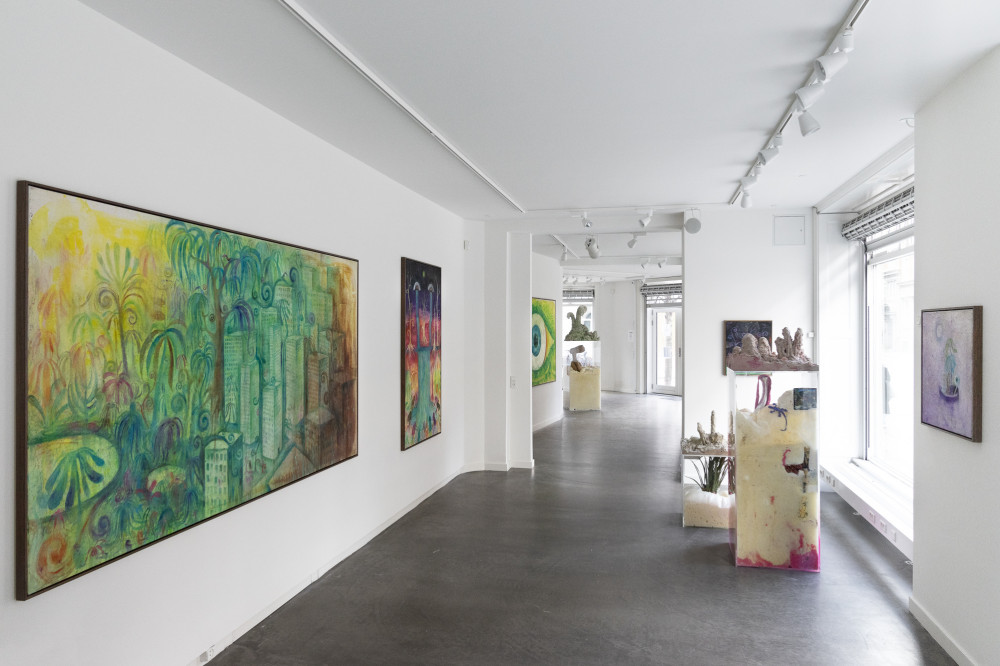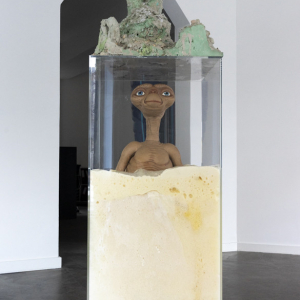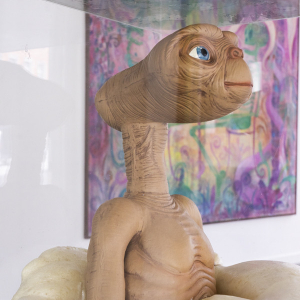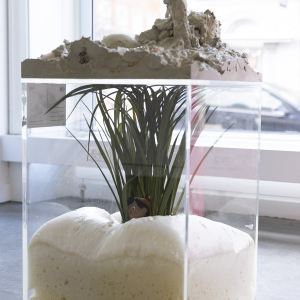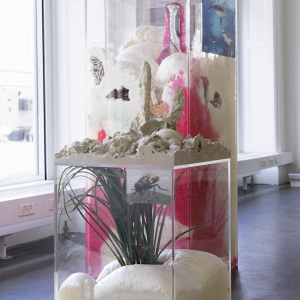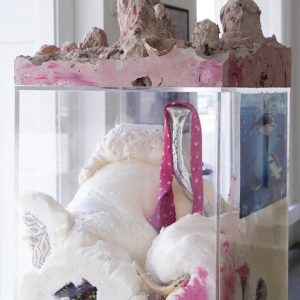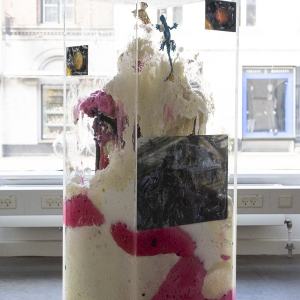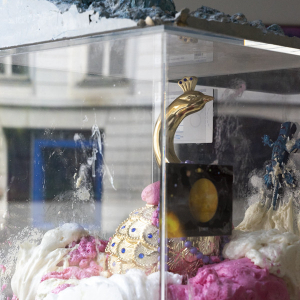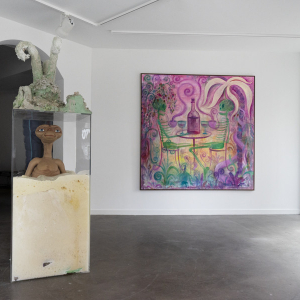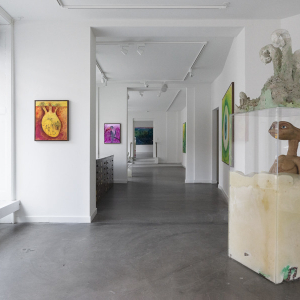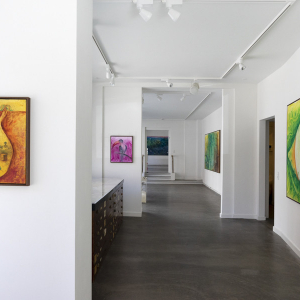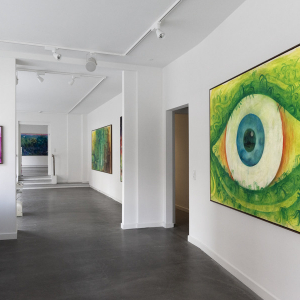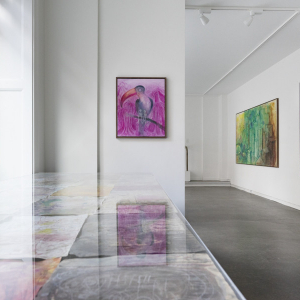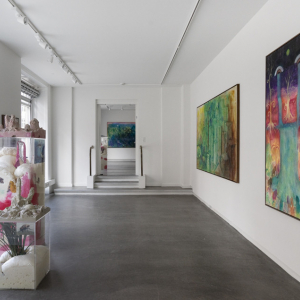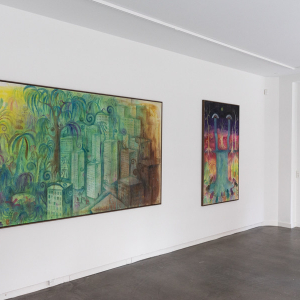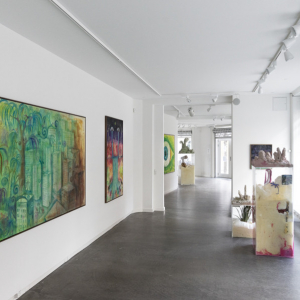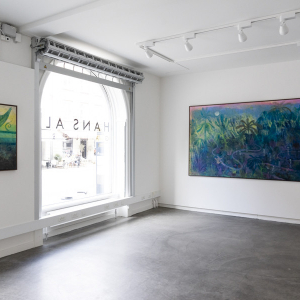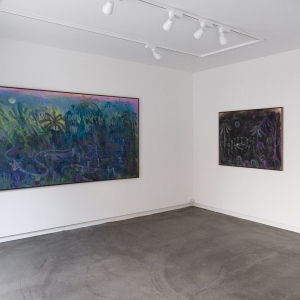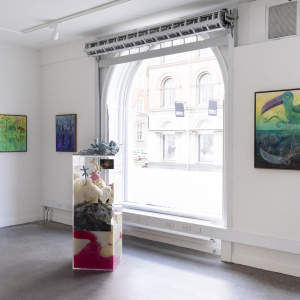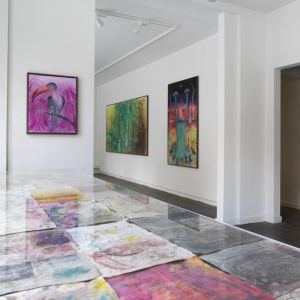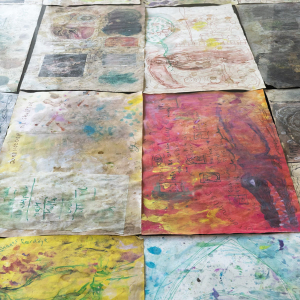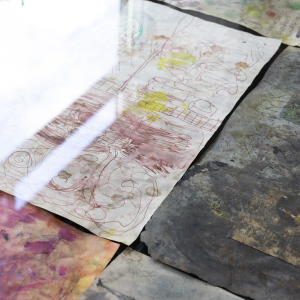Friday April 23, Anders Brinch’s new exhibition “Le Jardin (Under the Moon)” opens in Hans Alf Gallery.
In “Le Jardin (Under the Moon)” Anders Brinch continues his exploration of figurative narratives that are just as romantic and beautiful as they are disturbing and strange. Le Jardin – or “The Garden” – appears to be a fertile starting point for Brinch, who tends to explore tangled organic landscapes through his paintings. The artist himself states that metaphorically Le Jardin represents our planet. Here, he has summoned the Moon as a melancholic mirror which is held up to the world.
Some of the motifs are retrieved from the artist’s own childhood drawings, where he used to make pictures of toucans, caimans, and forests. Anders Brinch grew up in a house, where paintings and reproductions of artists such as Scherfig and Wiinblad adorned the walls, and this is apparent in a lot of his works, which give off an adventurous and almost oriental atmosphere.
Brinch’s paintings, however, tend to gradually lose their innocence along the way, as a naive excitement is replaced by something more surreal and psychedelic, and by a color scheme that belongs to neither Scherfig nor Wiinblad - or Goethe for that matter – but rather feels like something conjured up in an LSD-trip or under the influence of psychedelic mushrooms.
To the artist, the act of drawing and painting has always been a double-sided affair. On one hand it is a way of escaping; a safe and exciting parallel world removed from reality. On the other, it is a way for the artist to process and interpret the world, and ultimately take part in it.
One of the pieces in the exhibition is a remake of an old childhood drawing, which does not exist anymore. It depicted the Amazon, which was being destroyed to make room for a concrete jungle with skyscrapers and big city life. It may seem naïve, but it is a candid comment to current, local issues with the ongoing expansion of Copenhagen, in which urban planning eats up nature. As examples of this, there is the ongoing case of the colonization of Amager Fælled and the great urban plans of the artificial island of Lynetteholmen.
However, in Brinch’s reinterpretation of his childhood drawing, even the artist himself is not certain whether the work describes how civilization and urban life is about to suffocate nature, or whether it is a futuristic post-doomsday scenario hundreds of years from now; a place in which humanity has gone bankrupt and reached the bottom, or where mankind has gone on new, destructive adventures on planets in different galaxies, which gives nature a chance to renew itself on earth.
It is this exact ambiguity that occurs in many of the motifs in the show with visual reflections that connotes death and destruction on one hand, but also rebirth and resurrection on the other.
Though painting is his primary mode of expression, Brinch insists on keeping his options open in terms of other mediums. This shows in “Le Jardin”, where the artist incorporates a handful of transparent plexiglass podiums that function both as three dimensional collages and as a kind of memory bank filled with objects, materials, and general sources of inspiration. On top of the podiums, one finds small organic landscapes and beautiful tactile surfaces made from gypsum and Himalayan salt, which mimic micro plants and life on foreign planets.
